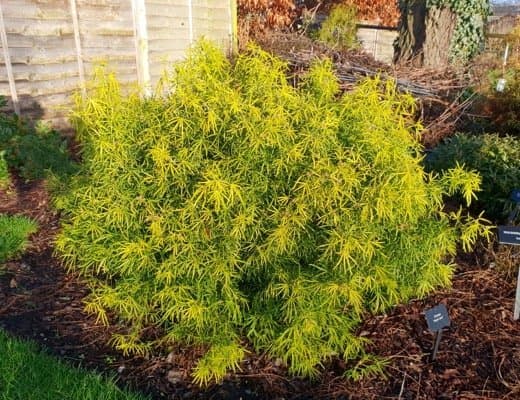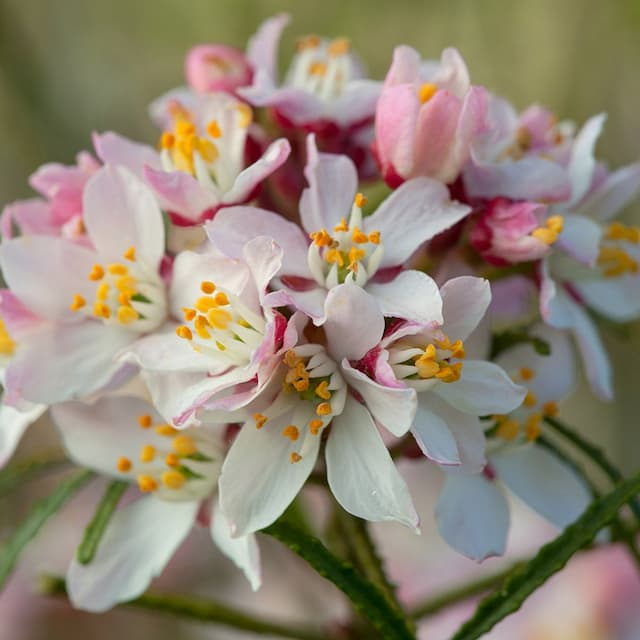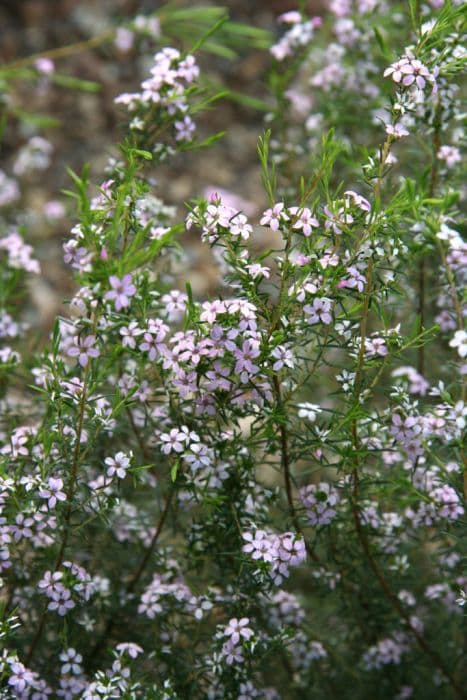Australian Fuchsia Correa pulchella

ABOUT
The Australian fuchsia is an attractive shrub known for its vibrant, bell-shaped flowers that captivate onlookers with their stunning blend of orange, pink, or red hues. These pendulous flowers exhibit a delicate display, often highlighted by contrasting green to blue-green foliage. The leaves of this plant are typically small, with a dense texture that adds to the plant's bushy appearance. As each season progresses, the Australian fuchsia prominently features its tubular blossoms that are a magnet for various pollinators, adding a buzz of life to the area it resides in. The plant's overall growth habit tends to be naturally rounded, creating a visually pleasing silhouette in any garden setting.
About this plant
 Names
NamesFamily
Rutaceae
Synonyms
Orange Correa, Australian Fuchsia
Common names
Correa pulchella var. typica, Correa pulchella var. tomentosa.
 Toxicity
ToxicityTo humans
Australian Fuchsia (Correa pulchella) is not widely known for its toxicity to humans, and there isn't readily available literature suggesting that it is poisonous. However, just because toxicity hasn't been established or widely reported doesn't guarantee that the plant is safe to consume. It's generally a good idea to avoid eating plants that aren't known to be edible, as they could cause gastrointestinal discomfort or other unknown reactions. If accidentally ingested, it is wise to seek medical advice, particularly if any adverse symptoms occur.
To pets
Australian Fuchsia (Correa pulchella) is not commonly recognized as a toxic plant to pets. However, as with any non-food plant, the consumption of plant material by pets could lead to mild gastrointestinal upset due to the irritation of the stomach or intestines. The lack of specific information on the toxicity of Correa pulchella suggests that it is not known to be a major cause of pet poisoning. Still, cautious pet owners should prevent pets from ingesting the plant, and consult with a veterinarian if there are concerns about accidental ingestion or if symptoms develop.
 Characteristics
CharacteristicsLife cycle
Perennials
Foliage type
Evergreen
Color of leaves
Green
Flower color
Orange
Height
3 feet (0.9 meters)
Spread
5 feet (1.5 meters)
Plant type
Shrub
Hardiness zones
9
Native area
Australia
Benefits
 General Benefits
General Benefits- Attracts Pollinators: Correa pulchella, commonly known as Australian fuchsia, is known to attract bees and other pollinating insects, which is beneficial for the garden ecosystem.
- Low Maintenance: This plant is considered easy to care for, requiring minimal upkeep once established, making it ideal for gardeners seeking low-maintenance options.
- Drought Tolerance: Australian fuchsia is drought-resistant, making it well-suited for xeriscaping and arid climates.
- Decorative Use: With its bell-shaped flowers and attractive foliage, Correa pulchella is commonly used as an ornamental plant in gardens and landscapes.
- Habitat for Wildlife: It provides shelter and food for various forms of wildlife, including birds and beneficial insects.
- Soil Erosion Control: The plant’s root system can help stabilize soil and prevent erosion, especially on slopes and in areas susceptible to soil loss.
- Year-Round Interest: Offering flowers and foliage across seasons, Australian fuchsia adds year-round interest and color to outdoor spaces.
 Medical Properties
Medical PropertiesThis plant is not used for medical purposes.
 Air-purifying Qualities
Air-purifying QualitiesThis plant is not specifically known for air purifying qualities.
 Other Uses
Other Uses- Correa pulchella, commonly known as Australian fuchsia, can be used in landscape design, featuring its attractive flowers as a low hedge or border plant.
- The dense foliage of the Australian fuchsia provides excellent habitat and shelter for small birds, especially in urban gardens where native flora may be scarce.
- The plant’s long blooming period from autumn to spring offers a consistent source of nectar for bees, making it a valuable addition to pollinator gardens.
- Australian fuchsia's durable and compact growth habit makes it suitable for coastal gardens, where it can tolerate sea spray and sandy soils.
- Its flowers can be used for casual floral arrangements, bringing a touch of wildflower beauty into the home.
- The plant can also serve as an excellent ground cover in areas where erosion control is needed due to its spreading nature and robust root system.
- Its adaptability to a range of soil types and pH levels makes Australian fuchsia a reliable choice for rehabilitating disturbed sites, such as post-construction landscapes.
- The evergreen leaves provide year-round greenery, offering visual interest in gardens even outside the flowering season.
- In cultural education, Australian fuchsia can be used to demonstrate plant propagation techniques such as cutting and layering due to its ease of growth.
- Gardeners may use the plant to create native wildlife corridors in suburban areas, promoting biodiversity and natural ecosystems.
Interesting Facts
 Feng Shui
Feng ShuiThe Australian Fuchsia is not used in Feng Shui practice.
 Zodiac Sign Compitability
Zodiac Sign CompitabilityThe Australian Fuchsia is not used in astrology practice.
 Plant Symbolism
Plant Symbolism- Adaptability: Correa pulchella, commonly known as Australian Fuchsia, is native to Australia and known for its ability to thrive in various soil types and weather conditions, symbolizing the ability to adapt to changing environments.
- Resilience: The plant's capacity to withstand drought and recover from environmental stressors represents resilience and the power to overcome challenges.
- Beauty in Simplicity: With its modest and delicate blossoms, Australian Fuchsia signifies the notion that there is beauty in simplicity and that it can flourish without grandeur.
- Attractiveness: The vivid flowers of the Australian Fuchsia are known to attract birds, especially honeyeaters, symbolizing allure and the ability to draw in positive attention.
 Water
WaterAustralian Fuchsia should be watered deeply but infrequently, allowing the top couple of inches of soil to dry out before watering again. In general, watering every 1-2 weeks during the growing season and reducing frequency in the winter is recommended. When watering, apply approximately 1-2 gallons per plant, ensuring that the water penetrates deeply to reach the root zone. It is important to avoid overhead watering to prevent foliar diseases.
 Light
LightAustralian Fuchsia does best in full sun to partial shade. The ideal spot for this plant would be where it can receive at least six hours of sunlight daily. It can also tolerate dappled shade, especially in hot, dry climates. However, avoid deep shade as this will reduce flowering and may cause the plant to become leggy.
 Temperature
TemperatureAustralian Fuchsia thrives in temperatures ranging from 40 to 85 degrees Fahrenheit. It can tolerate minimum temperatures down to around 30 degrees Fahrenheit, but it may suffer damage if exposed to frost. Ideally, maintain a temperate environment, as the plant does not do well in extreme cold or heat.
 Pruning
PruningAustralian Fuchsia should be pruned to maintain shape and encourage bushier growth. Prune after flowering has finished, usually in late winter or early spring, removing any dead or weak branches and cutting back by one-third to promote new growth. Pruning can be performed annually or as needed to keep the plants looking tidy.
 Cleaning
CleaningAs needed
 Soil
SoilAustralian Fuchsia prefers well-drained, sandy loam with a pH of around 6.0 to 7.5. A good soil mix would be one part garden soil, one part sand or perlite, and one part peat or organic compost to ensure good drainage and fertility.
 Repotting
RepottingAustralian Fuchsia should be repotted every 2-3 years to refresh the soil and accommodate the growing root system, ideally during spring or early summer.
 Humidity & Misting
Humidity & MistingAustralian Fuchsia thrives in moderate humidity conditions, aiming for a range between 40-60%. They are relatively tolerant of drier air but should be sheltered from extremely dry environments.
 Suitable locations
Suitable locationsIndoor
Place in a bright spot, avoid overwatering, and ensure good drainage.
Outdoor
Plant in a sunny to partly shaded spot with well-draining soil.
Hardiness zone
9-11 USDA
 Life cycle
Life cycleCorrea pulchella, commonly known as Orange Bell, begins its life cycle as a seed, which germinates in well-drained soil under appropriate moisture and temperature conditions. The seedling stage follows, characterized by the growth of roots, a shoot, and the first leaves as the plant establishes itself. In the vegetative stage, the Orange Bell experiences growth of stems, leaves, and root systems, which enables it to photosynthesize and accumulate resources. The plant then enters the flowering stage, typically in the cooler months, producing distinctive bell-shaped orange to red flowers that attract pollinators like birds and insects. After pollination, fruits develop which are dry capsules containing seeds, completing the reproductive phase. The cycle is closed when mature fruits release seeds, ready for germination and the start of a new life cycle.
 Propogation
PropogationPropogation time
Spring to Summer
The Australian Fuchsia, commonly known as Correa pulchella, is primarily propagated through semi-hardwood cuttings. The ideal time for taking cuttings is in the late summer to early fall, ensuring enough seasonal warmth to encourage rooting. To propagate, a gardener should select a healthy, non-flowering stem and make a cutting approximately 4 to 6 inches (10 to 15 cm) long. The lower leaves are then removed, and the base of the cutting is dipped in rooting hormone to increase the success rate. It is then planted in a well-draining potting mix or propagation medium and kept consistently moist but not waterlogged. The cuttings are typically placed in a warm, sheltered location with indirect sunlight. It takes several weeks for roots to develop, after which the new plants can be gradually acclimated to direct sunlight and eventually transplanted into the garden.









